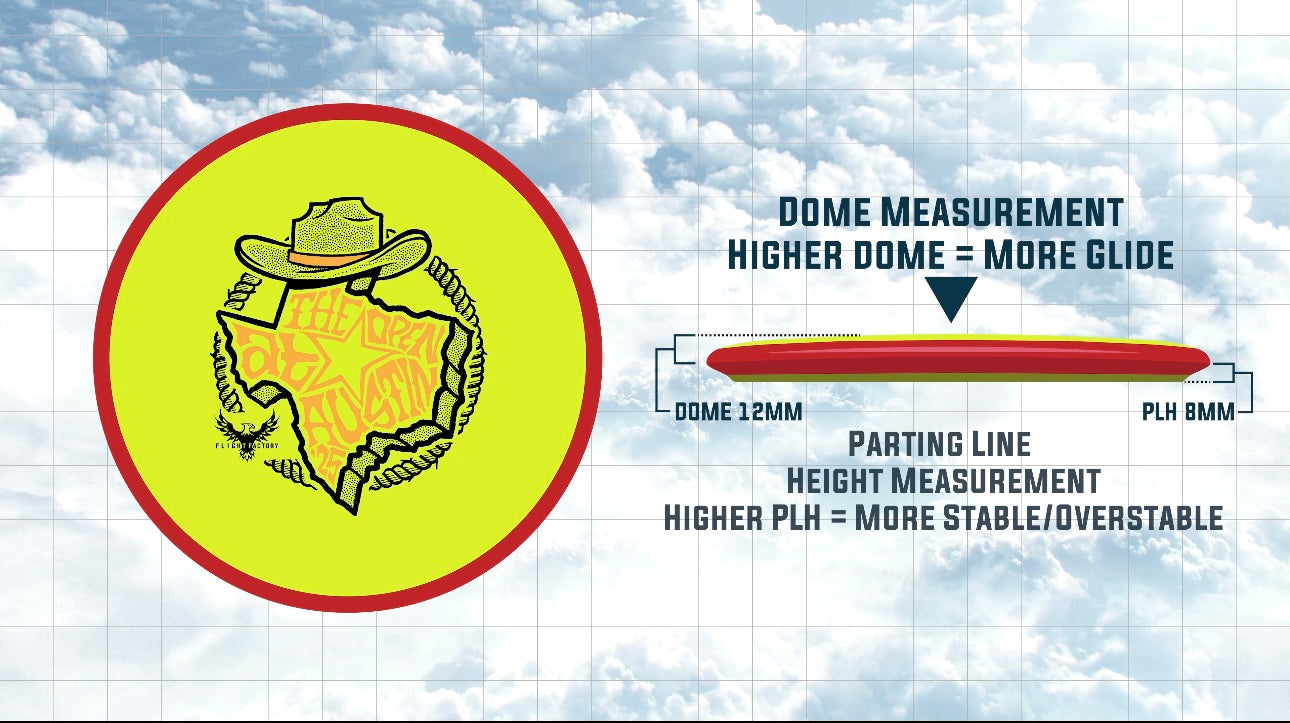How Parting Line Height (PLH) and Dome Affect Disc Flight
One of the most exciting (and sometimes confusing) aspects of disc golf is how two discs with the exact same mold and weight can still fly differently. At Flight Factory Discs, we want to give you tools to better predict how a disc will perform before it ever leaves your hand. That’s why we measure and show Parting Line Height (PLH) and Dome on every disc we list.
These two physical characteristics—though subtle—can make a big difference in stability, glide, and overall flight.
What is Parting Line Height (PLH)?
The Parting Line is the small seam you can see running across the middle of a disc’s rim, where the two halves of the injection mold meet. By comparing how high or low that line sits in relation to the rest of the disc, we can measure PLH.
- Higher PLH within the range of the mold = More overstable. A higher parting line means the nose of the disc is angled upward more, resisting turn and finishing harder.
- Lower PLH within the range of the mold = More understable. A lower parting line means the disc nose sits flatter, making it easier to flip up or turn during flight.
This is one of the most reliable indicators of stability between two discs of the same mold.
What is Dome?
“Dome” refers to how much the top of the disc pops up from the rim when you look at it from the side. Some discs are very flat, while others have a noticeable bubble-like rise.
- Flat-topped discs = Typically feel faster out of the hand and are more overstable. They cut through wind more effectively.
- Domey discs = Usually provide more glide, carrying further down the fairway with less effort. They can also make a disc slightly less stable depending on the mold.
Not all molds respond the same way to dome—sometimes a domey fairway driver adds glide, while a domey distance driver may make the disc less predictable in the wind.
Why These Measurements Matter
Flight numbers are a great starting point, but they don’t tell the whole story. By looking at PLH and Dome together, you get a much more accurate picture of how a specific disc will fly compared to another copy of the same mold.
For example:
- Two Destroyers might both say “12 | 5 | -1 | 3” on the flight chart. But if one has a high PLH and a flat top, it will fly much more overstable than a domey version with a lower PLH.
- If you’re hunting for a wind-fighting fairway driver, a higher PLH version is your friend.
- If you’re chasing max distance, that domey disc with extra glide could be the difference-maker.
How Flight Factory's Measurements Add Value
At Flight Factory Discs, we measure PLH and Dome on every disc we sell. That means there are No Surprises. That means you don’t have to guess. Whether you’re shopping online or comparing backups for your favorite driver, you’ll know exactly how that disc is likely to behave when it leaves your hand.
This extra detail helps you:
- Predict flight more accurately before buying.
- Build consistency in your bag by finding backups that actually match.
- Experiment with purpose, knowing how subtle physical differences influence performance.
Final Thoughts
Disc golf is a game of feel and flight, but it’s also a game of details. PLH and Dome are two of the most important—yet often overlooked—details that separate one disc from another. By tracking and sharing these measurements, Flight Factory gives you the confidence to choose discs that match your game, not just the stamp on the top.


Leave a comment (all fields required)